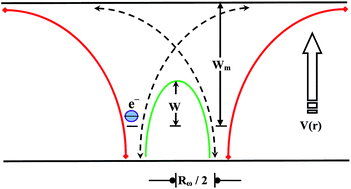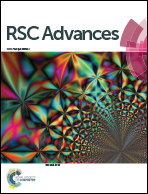Study of dielectric relaxation and thermally activated a.c. conduction in lead containing topological glassy semiconductors†
Abstract
Multi-component topological glasses of the Te20Sn2Se78−xPbx (0 ≤ x ≤ 6) system have been prepared by a cost-effective melt-quench technique that is well-known for its convenience. The study of dielectric relaxation in this novel glassy system was investigated as a function of temperature in the 300–350 K temperature regime and 50 kHz to 1 MHz frequency regime. An extensive investigation proved that dielectric losses are dipolar in nature and can be implicit in terms of hopping of charge carriers over a potential barrier, as suggested by Elliot for the case of chalcogenide materials. It was found that both dielectric constant and dielectric loss depend on temperature and frequency. Moreover, it was found that the values of both dielectric constant ε′ and dielectric loss ε′′ decrease with frequency and increase with increasing temperature. A detailed analysis showed that dielectric loss ε′′ obeys Guintini relation. The variation in the dielectric properties and a.c. conductivity with Pb composition was also explored. Density of defect states in the present glasses was measured using a correlated barrier hopping (CBH) model. According to the CBH model, electron hopping takes place over the coulombic barrier height W and neighbouring sites at a distance, R. The Coulomb wells overlap and result in a lowering of the effective barrier height from Wm to a value, W.



 Please wait while we load your content...
Please wait while we load your content...